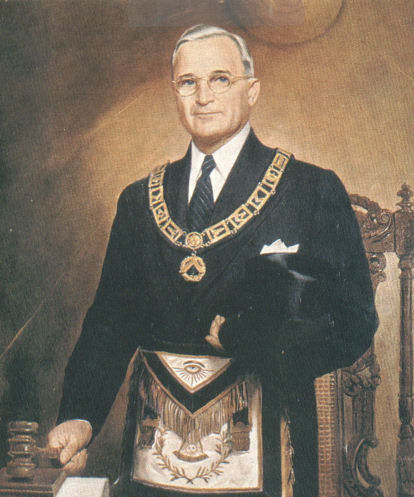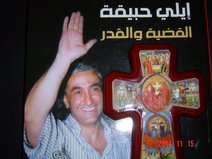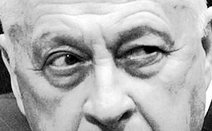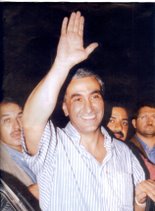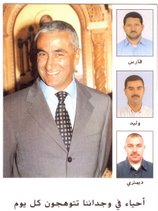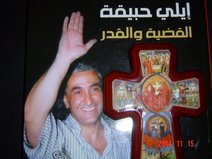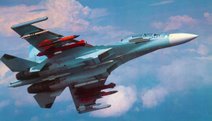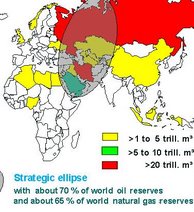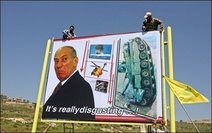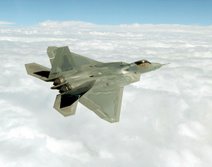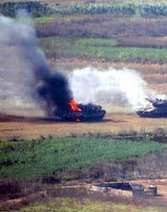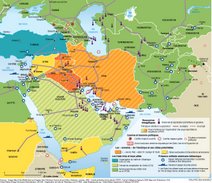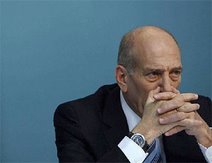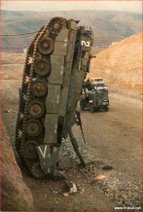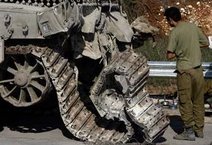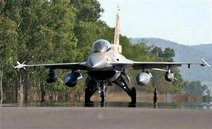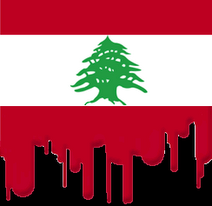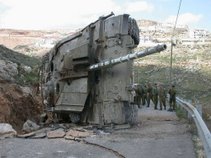
Up until now, the United States has been able to exert control over most of the earth just by controlling the narrative that reflects popular opinion about the war on terror. Whatever government spokesmen or reporters have said happened on a particular day, was what really happened; it was validated by popular consent. The ability to shape people’s thoughts and opinions is a power that every tyrant has dreamed about. Global trust in the good intentions of the people of the United States moves individuals and entire nations to give American leaders the benefit of the doubt, even when common sense cautions against it.
Until fairly recently, popular opinion did not often call into question the American or allied version of events. Widespread civilian “collateral damage” from air strikes and disagreements between the Pakistani and American military have opened the door to questions about the very nature of this war and the leadership, or lack thereof, displayed by Western decision-makers.
The US has decided that to win the war in Afghanistan, it must attack its closest ally in the war, because allegedly, Pakistan is the state sponsor of the Afghan Taliban. The Pak Army refuses to fight all the militants in Pakistan at one time, because their numbers are so great and tribal connections run so deep that it would be suicidal. American leaders claim that such a nationwide Pakistani offensive is the only way that the war can be won. Pakistan, on the other hand, maintains that the US, India and Israel are the state sponsors of the “Pakistani Taliban” terrorist outfit which is waging war against the people of Pakistan. Since the United States controls the narrative, the whole world holds Pakistan accountable for all the terrorism in the world, no matter whether it is true or not.
Now is a good time to question American motives and CIA dishonesty as the primary source of problems in this war. Obama’s minor investigation into agency shortcomings demonstrated during the underwear bombing incident, the destruction of the CIA drone center in Khost and the scathing NATO report on US intelligence shortcomings (“Fixing Intel”), on the heels of the Eric Holder investigation of CIA torture—all of these ongoing problems scream of an out-of-control spy agency. We have entrusted the CIA to lead this intelligence-driven war and time after time, but the egomaniacal spooks have consistently dropped the ball.
But the CIA has done much worse than merely fumbling their appointed tasks, they have demonstrated malice and outright criminality in their multi-layered covert war, which goes far beyond targeting any real or imagined enemy, as the plan moves forward to wage war against the entire human race, in order to accomplish their Imperial goals. Obama touched on the problem indirectly when he said someone “took their eye off the ball,” but he did not pursue the idea to its obvious conclusion—a lot of people “took their eyes off the ball,” all at the proper time to make the “al Qaida” plan work. Clearly, there are assets in key security positions who facilitated the Yemen attack, just as there were complicit facilitators who made the 911 attacks happen. It is no coincidence that there seem to be crossovers between militant groups and the security agencies which are tasked with pursuing them. This is because the militant groups are all children of various intelligence agencies, most of them working under contract for the CIA, knowingly or not, at some point.
Pakistan is allegedly the “epicenter of terrorism,” but if that was true, then why do most terror attacks in the world happen in Pakistan? Do not forget that the CIA provides 50 percent of the ISI’s budget. The ISI is a primary American contractor, as is India’s RAW. Western popular opinion fully accepts the American/Indian narrative, that only Pakistan sponsors terror. This ignores revelations by former Indian spy chiefs, who have confirmed that India did sponsor thousands of terrorists within Pakistan in the past, under a program called “Counterintelligence Team X,” but this allegedly ended in 1998.
Contrary to Indian and American statements, India is still a primary state sponsor of terrorism within Pakistan, but Western apologists help hide that fact, because the CIA is a partner in the current operations. In the past, India’s RAW and the CIA have been adversaries. Up until the era of the India/US nuclear agreement that hostility prevailed between the agencies.
The ongoing controversy over American spy David Headley is not the only public embarrassment that RAW has suffered at the CIA’s hands. In 2004, RAW spy chief Rabinder Singh was caught obtaining documents for the CIA and meeting with a female agent at a local motel.
He escaped to the US, where he was located in New Jersey in 2006. The Indian government tried to extradite him, appealing the charges against him, he claimed that he quit the agency and fled to the United States after being ordered to “participate in an assassination plot against a senior religious Sikh leader.”
Sometime after the extradition papers were filed, the following document was posted on the Internet. That document, called Summer Offensive Report was on the operations of “Counterintelligence Team X,” Singh had formerly ran the “Counterintelligence Team J,” which terrorized the Sikhs in Punjab. The Report gives no clue as to who ran the “X” Team, but the name Alok Tiwari comes-up in another paper, titled “Operation Blue Tulsi.”
The Summer Offensive Report claims to describe Indian/Israeli operations against Pakistan in 2004, centered around the town of Wana. A new operation did begin in Wana that year, the beginning of the “Pakistani Taliban” (TTP) project. That operation began with the killing of Nek Muhammad on June 17. Arguably, it probably began in with the Ilyas Kashmiri attack upon Musharraf. After being picked-up by the security services, the former Pakistani Special Forces commando/militant was captured was allegedly tortured until his release in early ’04. The experience left him a shattered man and he retired from the jihad until 2007.
The guided missile attack that killed Nek set in motion the events that would bring Baitullah Mehsud to power. He inherited a ready-made army from his cousin Abdullah Mehsud, which formed the hardcore Uzbek center of the TTP. After his sudden release from Guantanamo to Afghanistan in 2002, Abdullah suddenly amassed thousands of Uzbek and Northern Alliance fighters and became endowed with millions of dollars in cash and tons of the most advanced weapons.
Until now, researchers have consistently charged that the Pakistani Taliban were sponsored by India and Israel, but have had nothing to prove this other than photos of tons of Indian/Israeli/American arms. The following from Summer Offensive Report reinforces those charges:
“The summer offensive includes establishment of 57 training camps in Occupied Kashmir, East Punjab, Uttar Pradesh, Rajasthan, Gujarat, Madhya Pradesh, Maharashtra, Karnataka and Assam to train and launch terrorists inside Pakistan. Trainees are generally drawn from the Indian hatched dissident groups of Mohajir Qaumi Movement (MQM), Jiye Sindh Mohaz (JSM), Jiye Sindh Students Federation (JSF) and Balochi nationalists and other nationalist groups from various parts of Sindh, Balochistan and Tribal Areas.
For Pakistan RAW centers at London, Dubai, Iran, and South Africa operate against Pakistan jointly with Israeli MOSSAD.
India has opened Consulates (IOC’s) in Kandahar, Jalalabad, Mazar-e-Sharif and Herat, besides having an oversized diplomatic mission in Kabul.
Kandahar and Jalalabad are near the borders of Pakistan, which insinuates many things. The ongoing Wana operation is being fed cash, weapons and ammunition indirectly by RAW operatives under cover of Al-Qaeda. MOSSAD and AMMAN have also contributed heavily towards the funding and material requirements for these operations. The direct result of this was the effective slaying of 121 Pakistani regular infantry soldiers on Nov 8th’2004, just 3 days after the infusion of war material and assistance in logistics and planning operations of the tribals by operatives of RAW.
The summer offensive of RAW includes working on ethnic, regional, parochial and secular themes, which include Sindhu Desh Movement in Sindh, Saraiki Movement in Punjab, Tribal Balochis in the name of Greater Balochistan and taking advantage of Northern Alliance Government in Afghanistan and using its tentacles at Kabul, Jalalabad, Khost, Kandahar and Spin Boldak, the tribals in Waziristan and Balochistan are continuously being kept activated for fomenting trouble – while Taliban and Al-Qaeda are getting the blame and Pakistan gets the rap for “not doing enough” by US and “FRIENDLY” Afghan authorities.
After the Indian consulate in Karachi was wound up. RAW started maintaining contacts in their sources/links in Pakistan through their consulates at Zahidan and Dubai. Most of the staff at Indian Consulate in Zahidan is from intelligence/security organisations including RAW, Intelligence Bureau and Military Intelligence. The sizeable cover staff in their Embassy at Dubai under the pretence of tourist traffic. The set-ups are dedicated units mainly responsible for promoting ethnic unrest in Pakistan. They continue to provide financial and material support to various regionalist/sectarian parties in Sindh and Balochistan
UAE is being used as a launching pad for terrorist activities in Pakistan. Agents are getting hold of young, disgruntled elements and after carrying out their proper brainwashing, they are dispatched to Dubai. Indian Consulate in Dubai is issuing temporary passport to these activists for getting training/briefing. After completion of their formal training, they are launched into Pakistan to carry out their terrorist/sabotage activities.”
About the content:
I checked the Fata timeline and found the following—The Report claimed that “121″ soldiers were killed near Wana in a large attack sometime between Nov. 4 and 8, 2004–the timeline doesn’t list anything like that, but it does report that 140 soldiers and scouts were killed in or near Wana between March 16 and Dec. 9, 2004.
Beginning in November, the Report list dozens of rocket, mortar and land-mine/IED attacks around Wana.
The report author claims that the Indian embassy in Zeheden is the source of attacks in Iran, attacks that have probably been attributed to “Jundullah.” Jundullah did begin around Wana in ’04. The Report also mentions Amman, Jordan as a participant with Israel in the Wana effort. The suicide bomber who recently targeted the CIA drone base in Khost, Afghanistan was a Jordanian intelligence officer, related to King Abdullah, from the same hometown as “al Qaida in Iraq” leader Abu Musab Zarqawi. The Jordanian attacker was sent by Hakeemullah Mehsud, the commander of the Tehreek e-Taliban Pakistan, from Wana. It was a revenge attack for the killing of Baitullah.
more about “CIA Khost Bomber and Hakeemullah Mehsud“, posted with vodpod
Another document, which continues the alternative narrative since 2006 is the report titled, “Operation Blue Tulsi,” which began in early 2001, marking the start of Israeli/Indian operations against and within Pakistan.
By mid 2001 eyebrows were being raised over R&AW and Mossad’s cooperation and in July 2001 Janes Information Group reported that RAW and Mossad are cooperating to infiltrate Pakistan to target important religious and military personalities, journalists, judges, lawyers and bureaucrats. In addition, bombs would be exploded in trains, railway stations, bridges, bus stations, cinemas, hotels and mosques of rival Islamic sects to incite sectarianism. At the same time the Balochistan Liberation Army rose out of dead like a second incarnation and Balach Marri a Moscow graduate declares himself as the leader of BLA. Within weeks in Balochistan numerous training camps sprouted with each camp reported to be training up to a hundred militants. Agents from RAW, Mossad and CIA operating in Afghanistan started moving in.
In mid 2001 reports appeared that Special Operations Division of Mossad, also known as Metsada, specializing in assassinations and sabotage, has been based in India since May 2001 to train RAW operatives and Mossad and Shin Bet or Shabak were operating a number of teams in Indian Held Kashmir and were also operating a delicate spy network from Indian soil. In July 2001 RAW increased its budget for Indian consulates in Afghanistan by nearly 10 times.
Late in 2002 US and India signed an agreement on cooperation in disarming Pakistan’s nuclear assets and the two-player offensive team of OperationBlueTulsi found a third partner in the form of CIA. As a result of this deal Abdullah Mehsud was freed from Guantanamo Bay and returned to Pakistan with millions of dollars in cash.
By mid 2004, the government had ample evidence that BLA and some Baloch leaders were conspiring against the government, aided by foreign countries.
On 13 August 2004, the Chief Minister of Baluchistan, Jam Muhammad Yousaf is quoted by The Herald (Sep 2004-Karachi) as saying: “Indian secret services (RAW) are maintaining 40 terrorist camps all over the Baloch territory”.
Jan. 1, 2005 was the starting date. The local agents got the signal and the operation started with the ominous rape of a female doctor in Sui on 2 January 2005.
As expected the incident created headlines all around and culprits not being found created a widespread indignation. This was shortly followed by the firing of hundreds of small rockets at gas installation in Sui on 7 January 2005 which put a hole in the supply of gas to the rest of the country for an entire week.
Starting March 2007…,the numbers of ‘Pakistani Taliban’ in Swat surged and just their ammunition and their military hardware did. Some of this hardware was more advanced to what the Pakistani soldiers used.
A portion of this military hardware ended up in the ill-fated Lal Masjid. While intelligence and military were busy keeping Musharraf’s seat safe in Pakistan, a new political game started in the UAE.
Rehman Malik enthusiastically started pursuing the goal of National Reconciliation Ordinance. He became instrumental in the final deal between Benazir Bhutto, US and Pervez Musharraf and NRO.
Near the end of 2007, the intelligence and the military were convinced that a conspiracy had been hatched in the country with the sole aim of removing Musharraf from power.
The Assassination of Benazir Bhutto, simultaneous riots throughout the country, terrorist activities occurring in every province, all of this had considerable similarities to the Bush Administration-backed Color Revolutions. In order to keep Musharraf in power the government kept giving into one demand after the other. As a result Rehman Malik becomes head of Interior Ministry, Yusuf Raza Gilani becomes the Prime Minister of Pakistan and sweeping changes are made in the security and intelligence community. Still, the government saw the war finally over when in one move Gilani puts ISI under the Interior Minister on 27 July 2008.
The entire Wana-centric destabilization plan can be seen in the so-called Tehreek Taliban Pakistani movement, the Punjabi-Taliban influence and the leadership succession. In addition, it traces the roots of the entire “Islamist” psyop that grew from CIA/ISI operations against the Soviets and the Iranians. Anti-Shia sectarian terror outfits were formed in Pakistan, then sent into Afghanistan, where they slaughtered both Soviets and Shiites. After the Soviet defeat, they turned against the Iranian-sponsored Northern Alliance troops, before being fought to a standstill by the forces of legendary rebel leader
Ahmed Shah Mahsoud. (Mahsoud was eliminated by a suicide bomber on September 10, 2001, his forces taken over by Uzbek General Abdul Rashid Dostum with the aid of one Amrullah Saleh, who is now the head of the Afghan secret police (NDS) and might be working for Iran.)
In ’07 the British operation in Helmand, Afghanistan, which had been centered around recruiting the brother of militant Mullah Dadullah, Mansoor was merged with the Indian/American/Israeli hotbed of terrorism in S. Waziristan. Baitullah was promoted to top dog in the militant hierarchy, as Benazir Bhutto was killed and Mansoor Dadullah took the blame. The Afghan Taliban transferred Dadullah’s forces to Mehsud, conferring legitimacy upon the operation, Mullah Omar not yet realizing that Baitullah was really anti-Taliban.
Mehsud’s Swat operation under radical disc jockey, Mullah Fazlullah, was the opening front of the Wana-trained forces against the Pakistani Army. It is no coincidence that there was not a single Predator attack against Fazlullah’s forces, and all drone attacks from that point on were against Baitullah Mehsud’s main adversary, Mullah Nazir in Wana. Nazir was the head of the Pak Army supported tribal lashkars who had run the Uzbeks of Mehsud out of Wana.
In 2008 Bush signed a secret order authorizing operations inside Pakistan and the Pakistani Army secretly acquiesced to American Predator show attacks upon former Guantanamo alumni. This provided a means to keep up the show for the American audience. It also opened the door to covert commando strikes in conjunction with action by the Pakistani Taliban.
The rest is history. On August 6, 2009, Baitullah Mehsud was mistakenly killed by an American guided missile, tracking a Pakistani-planted transmitter. It is likely that the CIA was tricked into killing Pakistan’s primary enemy. Ten days later, the tribal rival of Mehsud, Maulvi Nazir, who very likely had planted the tracking device, is killed by black-clad Special Forces type commandoes near Wana; probably payback from the United States.
The “AfPak” zone of conflict is a land of smoke and mirrors intended to put-on a show and simultaneously obscure the action on the ground. Beginning in 2007, the action obscured was a covert Indian/American war upon the people of Pakistan.
All the usual voices will chime in here, saying—“We didn’t create al Qaida; we didn’t sponsor Abdullah Mehsud, or Baitullah; we don’t create terrorists”! No matter how much they yell, the truth remains to be seen in these militants and their actions. After his release from Guantanamo, Abdullah Mehsud did not kidnap or kill Americans; he went straight after America’s greatest competitor, the Chinese. Likewise, in the case of Abu Musad al-Zarqawi, the leader of “al Qaida in Iraq,” after his release from Jordanian prison, his victims were usually Iraqi Shiites, not Americans. After being captured, abused and then released, both of these guys went after our enemies, no matter what the press has reported otherwise. Were they brainwashed, “Manchurian candidates,” or were they merely paid-off? US Rep. Mark Kirk has raised the issue that most of the militant leaders in southern Afghanistan were formerly held at Guantanamo and Bagram. Is that also a coincidence, or by design? “Islamists” are primarily a product of the intelligence agencies.
American/Israeli/Indian/Iranian/British hands are all extremely dirty after taking a walk on Dick Cheney’s “dark side” in Pakistan and they owe a heavy penalty to both Pakistan and Afghanistan for what they have done there. It is high time to drag all the spooks out of their closets and air their dirty linen to the world. Only such a complete CIA housecleaning as this will redeem the United States of America in the eyes of the world. Anything less would do no good at all, and would also be a grave insult to those who have fallen in our poisonous shadow.

by Jim Sinclair





